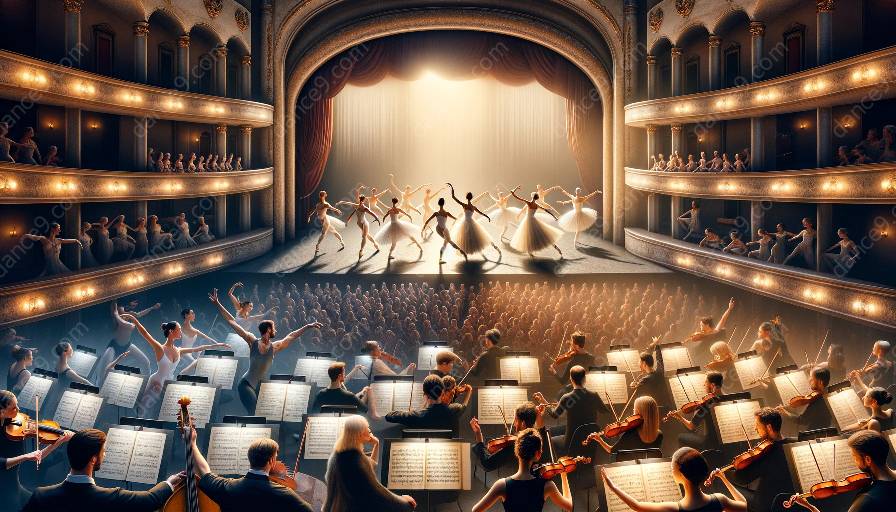Music has a profound impact on ballet, influencing the technical elements of this graceful and disciplined art form. The intricate relationship between music and ballet has evolved throughout history, shaping the theories and practices of both art forms. It is essential to understand the way music influences ballet technical elements, as well as the historical and theoretical impact of music on ballet.
Influence of Music on Ballet
Music plays a pivotal role in the structure and execution of ballet. The rhythm, melody, and mood of the music directly influence the movements, tempo, and emotional expression of ballet dancers. In classical ballet, the music provides the foundation for the choreography, guiding the dancers through their performances with its rhythmic patterns and dynamic shifts.
The influence of music on ballet technical elements can be observed in the way dancers interpret and embody the music through their movements. The music sets the pace for movements such as jumps, turns, and extensions, guiding the dancers in their spatial awareness and timing. Additionally, the emotional nuances conveyed through the music inspire dancers to infuse their performances with depth and expression, reflecting the music's mood and narrative.
Impact on Ballet History and Theory
Throughout ballet history, music has been a driving force behind the evolution of technical elements in choreography and performance. As ballet progressed from its origins in the Italian Renaissance courts to the grand productions of the Romantic era and beyond, the relationship between music and ballet technical elements became increasingly intertwined. Composers such as Tchaikovsky and Stravinsky created iconic scores for ballets, shaping the technical and artistic demands of the dancers.
Furthermore, the theoretical principles of ballet technique are deeply rooted in the musical accompaniment. Ballet instructors often emphasize the importance of musicality in training, teaching dancers to align their movements with the musical phrasing and dynamics. This integration of music and technical elements serves to enhance the dancers' precision, artistry, and storytelling capabilities, fostering a harmonious blend of music and movement.
The Interplay of Music and Ballet Technical Elements
The interplay between music and ballet technical elements creates a captivating synergy that elevates the art form. Dancers rely on the music to guide their physicality, utilizing its rhythmic structure and emotional nuances to convey the narrative and aesthetic of the choreography. As dancers master the intricate technical elements of ballet, music becomes an integral partner in their artistic expression, allowing them to transcend the physicality of their movements and communicate profound emotions through the marriage of sound and movement.
Ultimately, music’s impact on ballet technical elements is a testament to the symbiotic relationship between music and dance. The fusion of musicality and technical precision in ballet epitomizes the transformative power of music, as it shapes and enhances the physical and emotional dimensions of the art form, inspiring audiences and performers alike.





























